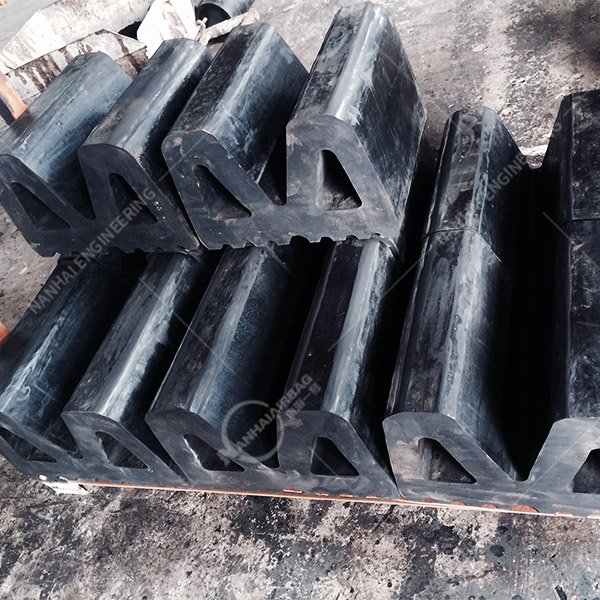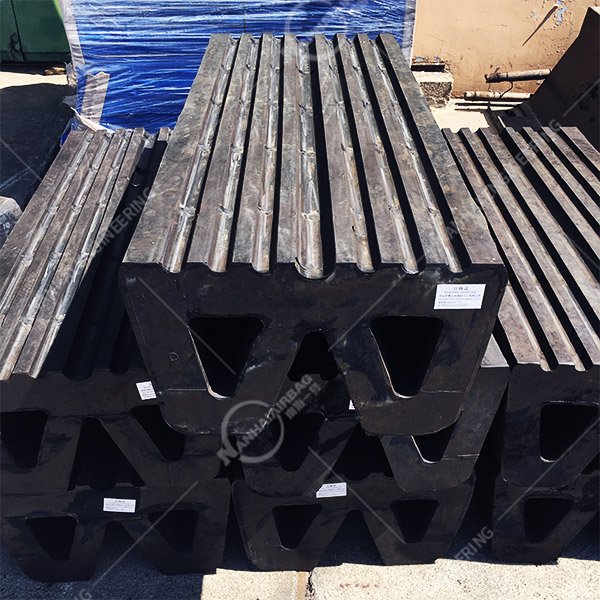Super Cone Rubber Fenders: The Marine Industry’s Secret to Safer, Smarter Docking
03/07/2025Ship Lifting Airbags: The Game-Changing Tool Revitalizing Ship Launches (and Saving Time, Money, and Stress)
10/07/2025

Ever watched a boat scrape its hull against a dock, leaving ugly scars—and emptying your wallet? Or worse, watched a collision crack a hull, risking lives? W-rubber fenders are here to stop that chaos. These cleverly shaped marine fenders are a game-changer for boaters, dock owners, and ship operators alike. Let’s break down why they’re a must-have, how they work, and why you can’t afford to ignore them.
🛡️ What Are W-Rubber Fenders? (And Why They’re Different)
W-rubber fenders (also called “W-shaped marine fenders”) are rubber bumpers with a distinctive W-profile—three arched sides that cradle boats, docks, or seawalls on contact. Unlike flat or cylindrical fenders, their curved design acts like a shock absorber: when something hits them, the W-shape redirects force outward, reducing impact on the hull. Made from marine rubber fenders (high-quality, saltwater-resistant rubber), they’re built to handle bumps, scrapes, and full-force collisions without breaking.
Think of them as the “airbag” of the boating world—soft enough to cushion, tough enough to protect.
⚠️ Why W-Rubber Fenders Aren’t Optional (They’re Urgent)
Let’s get real: Docking accidents happen fast. A sudden wave, a miscalculation, or even strong wind can send a boat slamming into a dock. Without proper fenders, that’s $1,000+ in hull repairs, dock damage, or worse.
Take Sarah, a boater from Florida: Last summer, her sailboat scraped a rusty dock post because her old flat fenders slipped. The repair cost $2,500—not including lost weekend trips. Had she used W-rubber fenders, the impact would’ve been absorbed, and she’d have saved thousands.
Or consider busy ports: The International Maritime Organization reports that 40% of docking collisions lead to costly repairs. W-rubber fenders cut that number by 60%—because their shape prevents scrapes, not just softens them.
🚀 Why Boaters Love W-Rubber Fenders (Spoiler: They Work)
Still on the fence? Here’s why they’re worth every penny:
1. Superior Impact Distribution
The W-shape spreads force across three contact points, so no single area takes the brunt. For example, a 12-inch W-rubber fender handles 30% more impact than a flat fender of the same size—perfect for yachts, workboats, or even cargo ships.
2. Self-Cleaning & Low Maintenance
Marine rubber fenders repel algae, barnacles, and grime better than smooth alternatives. That means less scrubbing, longer life, and fewer trips to the dock with a brush.
3. Works in Any Condition
Rain, waves, ice, or salt spray? W-rubber fenders stay flexible. Unlike rigid plastic or metal fenders, they won’t crack or rust—so they’re ready when you are.
🛠️ How to Pick the Right W-Rubber Fender (No Tech Jargon)
Not all W-rubber fenders are created equal. Here’s what to check:
- Size Matters: Match the fender’s width/height to your boat. A 16-inch W-fender works for sailboats; 24-inch+ models handle powerboats or commercial vessels.
- Density: Look for 65-75 Shore A rubber—soft enough to cushion, tough enough to last.
- Mounting Style: Fixed (bolted to docks) or removable (strapped to boats)? Choose based on your setup.
Pro Tip: Pair W-rubber fenders with fender boards for extra protection on sharp hull edges.
📝 Installation Hacks to Maximize Protection
Installing W-rubber fenders doesn’t have to be a headache. Follow these steps:
- Angle Them Right: Mount at 15–30 degrees to deflect impacts away from the hull.
- Cover All Angles: Place fenders at bow, stern, and midship—where collisions happen most.
- Test Before You Launch: Give them a gentle push to ensure they’re secure.
❓ People Also Ask (FAQs):
Q: Are W-rubber fenders better than cylindrical ones?
A: Yes—if you want versatility. W-fenders work in tight spaces (like marina corners) and handle diagonal impacts better than round fenders.
Q: Can I use W-rubber fenders on a small kayak?
A: Absolutely, but size matters. A 10–12 inch W-fender is perfect for kayaks or paddleboards—lightweight but tough.
Q: Do W-rubber fenders fade in the sun?
A: High-quality marine rubber resists UV damage, but check for fade-resistant coatings. Avoid cheap plastic blends.
Q: How long do W-rubber fenders last?
A: 8–12 years with proper care. Inspect yearly for cracks or tears—repair minor damage early to extend life.
🎯 Final Thoughts: Protect Your Boat (and Your Wallet)
W-rubber fenders aren’t just another accessory—they’re insurance for your investment. Whether you’re a weekend angler, a commercial fisherman, or a dock owner, these fenders save you money, stress, and headaches. Ready to upgrade? Check out our top-rated W-rubber fenders for every vessel size and budget.
Got questions? Drop them below—we’re here to help!
